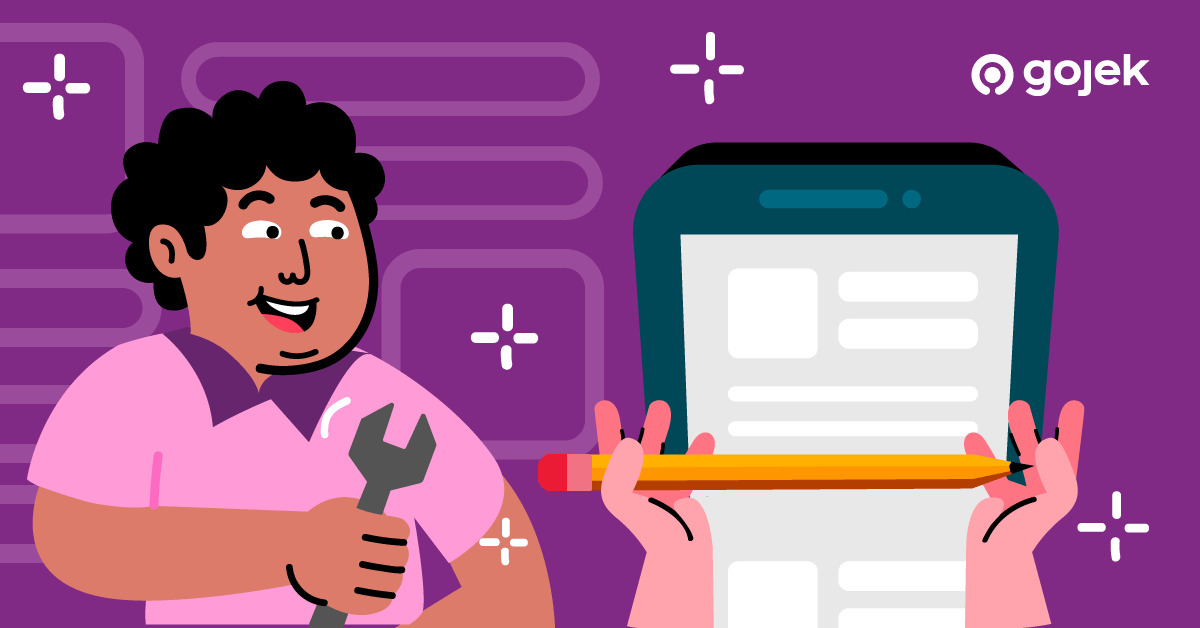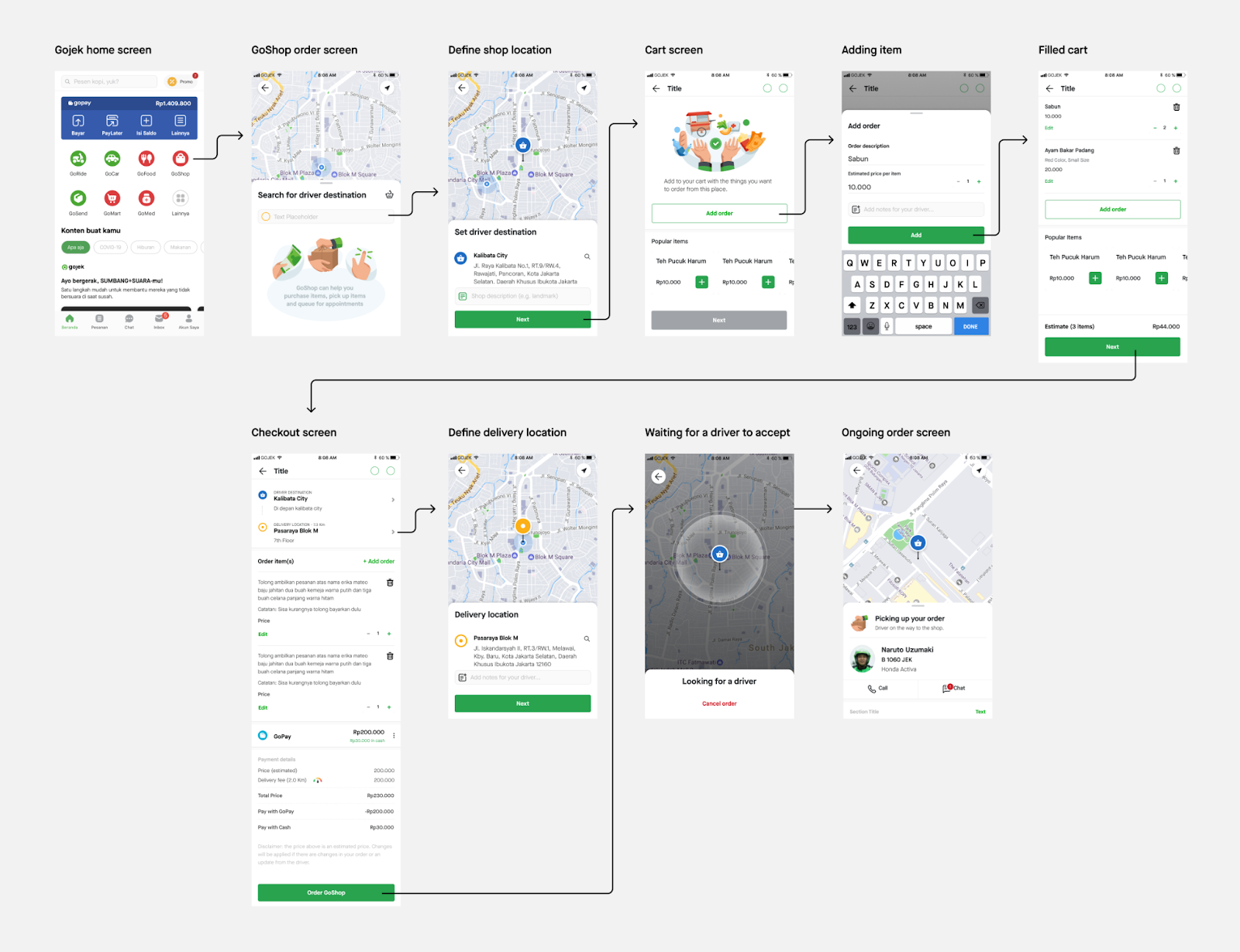How A Small Design Change Uplifted The GoShop Experience
Here's the story of how one minor change in our GoShop design improved the Booking Completion Rate and enhanced the shopping experience.

By Fatih Hamzah
Have you ever wanted to buy something from your favorite store but they are not discoverable online? Or maybe something from new stores that do not have quick online delivery service yet? We all have! There were times when I knew the exact store location and what I wanted to buy, but it was a hassle to go outside while I needed them ASAP. Here’s when GoShop comes in as a solution for this situation.
GoShop provides our customers a free-text shopping experience where you can write what you need, specify the location on a map, and ask a Gojek driver to buy it for you. And now, it’s story time!
Well, the use case seems straightforward, doesn’t it? But it’s not simple to make this service possible. Here’s one of the pain points we discovered:
If the name of the store is not available on Google Maps, it takes extra effort to find where it is our driver partners.
Yes, if the store is popular enough it might not be much of a hassle to reach. But for emerging small businesses this might not be the case. Difficulty to find location is one of the biggest issues we heard from driver partners that resulted in many GoShop uncompleted bookings. This issue gave me and our product manager sleepless nights trying to figure out a solution for the huge number of incomplete orders.
Here’s a peek into GoShop’s order flow back then:

As a product designer, it intrigues me to figure out how the process happens and thus, it helps to collaborate with product researchers to have interviews with both customers and drivers. Turns out, it wasn’t just the invisibility of the stores on maps, but also the lack of location awareness among driver partners.
Some drivers were new or arrived from entirely different areas, which made them rely only on Google Maps to reach the destinations. But, if Google Map itself can’t give any clarity, who will?.
Right at that moment we realized that customers who know the location are the key to help drivers to complete their orders. So we tried to go through GoShop’s customer journey again and look for ways where customers and driver partners can help each other out.
The crucial moment happened to be when customers and drivers chat or call each other through GoShop, to communicate the details of order and store location. These features helped drivers get clarity of the order, but our booking completion rate was still not improving. We had to find a way to tweak and make the communication more efficient. Explorations were made and we were looking for quick solutions with good results.
In GoShop, when users try to define the location on a map, they can put some notes or comments attached to it so that drivers can get better clarity. The feature is sure there but why don’t users use it? Little did we know that, after a funnel tracker check, users rarely use the notes. From the top funnel, very few users put details on the note when defining shop location. Down the funnel (during checkout) it rarely used as well due to an extra step required to go to the map.

Then, after ideating with the team, we picked one proposed solution to try:
From research, we learnt that the checkout page is the place where users usually evaluate or review their order before hitting the order button. The idea was to reduce the step by surfacing the note on the checkout page where users review their orders.
Hypothetically, users will see the note and be encouraged to give more details that could help the driver arrive at the right location. A small design change was made and we did experimentations. One control group without the note visibility on checkout (status quo) and another group with it.

All we did was only by having the note input feature upfront. But guess what? More location detail notes were made by users! On the experimentation we evaluated our Booking Completion Rate as well. We compared the two groups and saw that not only did we have more number of location detail notes, but also have a statistically significant uplift on booking completion rate!
This means we changed users’ behavior to give more details on the store location, which eventually led to improving the likelihood of drivers completing orders.

To read more stories, click here.
To be a part of the story, check out open job positions below:

